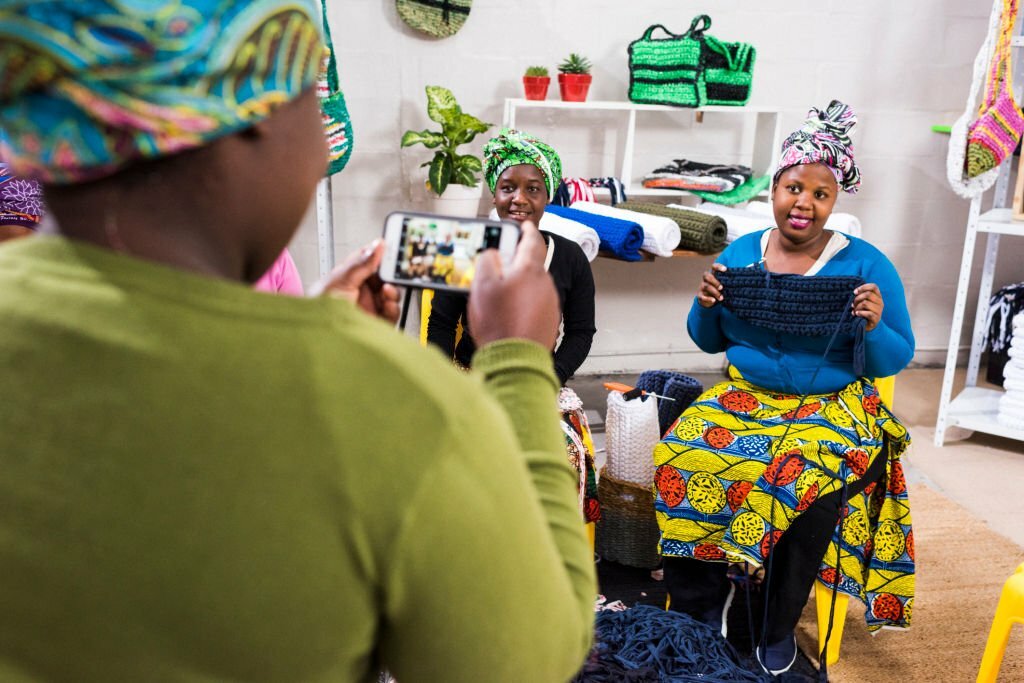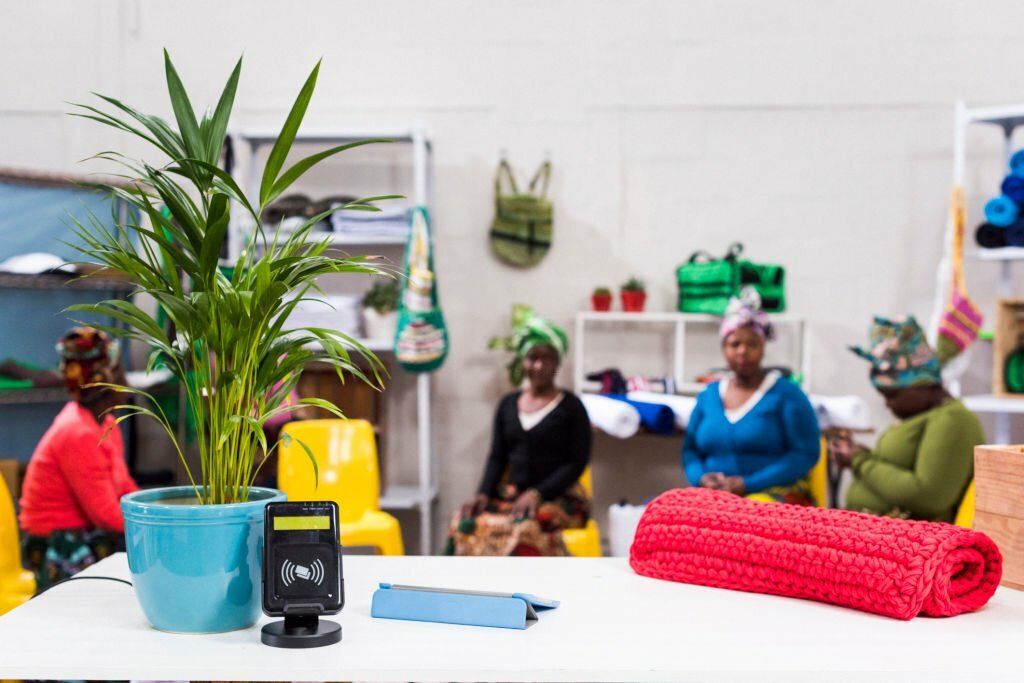
Vintage gems have a special attraction in the world of fashion. They are more than simply clothes; they are a portal to the past, a window into another period.
The attractiveness of vintage clothing stems from its history, craftsmanship, and storytelling.
While vintage boutiques and thrift stores are frequent places to uncover such treasures, West Africa's classifieds are an unusual yet intriguing way to discover vintage fashion.
West African fashion market isn't the first location that springs to mind when you think of vintage clothes. Still, it's a hidden gem worth discovering.
In this article, we will go deep into the realm of Fashion Finds and vintage clothes in West Africa's ads, investigating the history, uniqueness, and joy of discovering these hidden jewels.
● UGG Women's Classic Mini II Boot
● Levi's Women's Diamond Quilted Shirt Jacket
● Breda Virgil Gold and Metal Watch
● Argeousgor Newspaper Printed Tube Dress
● The Drop Blake Long Blazer
● Nippies Nipple Cover
● KIWomen Womens Casual Lounge Cotton Shorts
● Levi's Women's 501 Crop Jeans
● LACUONE Transparent Mules
● WAYF Open Back Ruffle Hem Midi Dress
● Joomra Women’s Cloud Slides
● Lack of Color Wide-brimmed cotton Canvas Bucket Hat
● Teva Flatform Universal Sandal
● DUOWEI Knitted Set![Fashion Finds Unearthing Vintage Treasures in West Africas Classifieds - [VendorFlip.com]](https://vendorflip.com/oc-content/plugins/blog/img/tinymce/20231114174701_Fashion Finds Unearthing Vintage Treasures in West Africans Classifieds - [VendorFlip.com].jpg)
Now that you're itching to scour West Africa's classifieds for vintage apparel, here are some helpful hints to help you have a successful and fun time:
1. Conduct your research: Before diving into the realm of West African vintage fashion, learn about the region's textile history and current fashion trends. This process will assist you in appreciating and identifying genuine artefacts.
2. Make Friends with Local Sellers: Connect with local dealers or collectors who are interested in vintage clothing. They can offer insights, recommendations, and access to unusual works that you may not be able to locate otherwise.
3. Thoroughly inspect: When you come upon a vintage item that piques your attention, inspect it thoroughly. Examine the item for evidence of wear, damage, or changes. Vintage things may have some wear and tear, but it's critical to know what you're getting.
4. Respectfully bargain: Bargaining is a widespread practice in many West African classified markets. However, it is critical to bargain respectfully and fairly. Remember that sellers frequently place sentimental and historical value on vintage clothing.
5. Keep an open mind: Finding vintage clothing is an adventure. Keep an open mind and be ready to appreciate unexpected discoveries. Sometimes, the most spectacular pieces are the ones you weren't looking for.
What distinguishes West African vintage attire from conventional thrift store finds in Western countries?
It is extremely unique because of the blend of cultures and the craftsmanship. When you browse the classifieds in West Africa, you'll come across garments that combine traditional African designs with European influences, resulting in a distinct and intriguing style.
1. Cultures Collide: West African vintage dress frequently displays a stunning fusion of cultures. Dresses or shirts created from African materials but tailored in a Western style, for example
These clothes convey a story of cultural interaction, adaptation, and innovation. They attest to the region's rich history as well as its capacity to welcome and incorporate numerous influences.
Many vintage objects seen in West Africa are handcrafted with exquisite attention to detail. The region's artisans have a long tradition of creating textiles and garments, and their abilities are seen in every stitch.
The craftsmanship is unrivalled, whether it's the elaborate beadwork of a traditional African garment or the superb tailoring of a European-style suit.
2. Sustainability: Vintage clothing is innately sustainable, particularly in West Africa. You contribute to the circular fashion industry by purchasing vintage items from classifieds.
You're not only getting a one-of-a-kind and lovely item; you're also lowering the demand for new clothing manufacturing and helping to reduce the environmental impact of the fashion industry.
Vintage clothing and accessories are those that are at least 20 years old. It is well-known for its distinct styles, historical significance, and long-term viability. People value vintage things for their quality and craftsmanship, as well as the potential to stand out in a crowd with one-of-a-kind goods.
Look for labels, zippers, and buttons that represent the style of a specific era to identify genuine vintage clothing. Examine the cloth, stitching, and overall structure for hints about its age. Research can assist you in identifying distinct design aspects of periods.
Vintage fashion products can be found in a variety of venues, including thrift stores, vintage boutiques, flea markets, internet marketplaces, and even estate sales. West Africa's classifieds are becoming increasingly popular for finding one-of-a-kind vintage items.
Vintage fashion eras vary in appeal, although the 1920s, 1950s, 1960s, and 1980s are frequently sought after. The '20s are recognized for their flapper dresses, the '50s for their big skirts, the '60s for mod fashion, and the '80s for their vibrant, colourful fashions.
Avoid frequent washing while caring for vintage clothing because it might weaken the fabric. Items should be stored in a cool, dark, and dry location away from direct sunlight. For delicate objects, use padded hangers, and consider expert cleaning for costly pieces.
The cost of vintage fashion goods varies. While some are reasonably priced, rare or designer vintage pieces can be extremely costly. The price is determined by criteria such as scarcity, condition, and brand. Shopping at secondhand stores and internet auctions can provide more cost-effective possibilities.
Absolutely! You can sell your antique clothing through a variety of methods. eBay, VendorFlip, Etsy, and speciality vintage clothing marketplaces are all fantastic possibilities. You could also think about selling at local flea markets or consigning items with vintage boutiques.
When buying antique clothing online, look into the seller's reputation and read reviews. Request additional photographs and information about the item. Check for secure payment options and confirm the seller's return policy. Be patient; it may take some time to discover the perfect piece.
Yes, antique clothing is a sustainable option. By purchasing and wearing antique clothing, you help to reduce the demand for new clothing creation, which has a huge environmental impact. It's a way to practice ethical and environmentally responsible fashion.
It's all about mixing and matching when it comes to incorporating old fashion into a current outfit. Begin with statement pieces such as a vintage blouse, dress, or accessory, and mix them with modern ones. Experiment to develop a distinct style that combines old and new.
Vintage clothes have cultural value in West Africa because they connect individuals to their heritage. Traditional African clothes, colonial-era clothing, and culturally influenced accessories are all part of the region's rich past, and wearing vintage clothing is one way to honour this legacy.
When purchasing vintage clothing in West Africa's ads, it is critical to investigate the seller, carefully inspect the item, negotiate costs appropriately, and appreciate authenticity. If you're buying from or exporting to a different nation, be aware of shipping and customs rules.
Vintage fashion in West Africa has a bright future because of increasing online accessibility, partnerships, and a growing understanding of sustainability. Vintage fashion is more than just a trend; it is a cultural phenomenon that honours the past while moulding the region's fashion future.
To join the vintage fashion community in West Africa, seek online forums, social media groups, or local vintage fashion events and exhibitions. Engaging with others who share your interests can be a terrific way to learn, share, and connect.
Yes, vintage clothes have become a source of income for many people in West Africa. Selling antique clothing and accessories can generate income and help the local economy. It's a movement that encourages entrepreneurship and long-term sustainability.
The classifieds in West Africa are a secret treasure mine for vintage fashion enthusiasts. This region is an intriguing trip for individuals who enjoy the beauty of the past because of its history, originality, and the thrill of discovery.
Exploring West Africa's classifieds allows you to not only buy amazing fashion pieces but also to become a part of a broader narrative that preserves and celebrates the region's rich fashion past.
So, whether you're an obsessive collector or seeking a sustainable and culturally rich fashion experience, don't pass up the chance to discover antique gems in West Africa's classifieds. Good luck with your hunt!


Comments